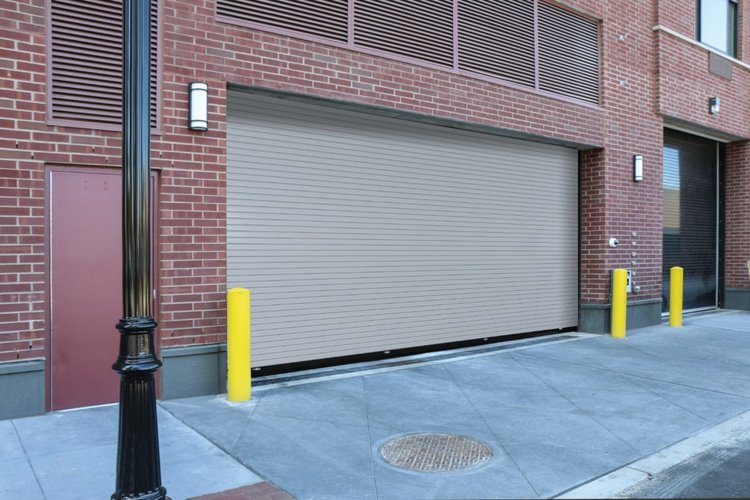Adding insulation to your garage door is one of the smartest ways to make your home more comfortable and energy efficient. If you’ve been thinking about a garage door insulation kit, we’re here to walk you through the basics—what they are, how they work, and why they might be a great option for your garage.
Quick Note: At Overhead Door Company of Bellingham, we don’t sell insulation kits, but we love sharing helpful info so you can make the best decisions for your space.
What Is a Garage Door Insulation Kit?
A garage door insulation kit is a DIY product made to help homeowners add insulation to their existing garage doors. These kits usually include:
- Pre-cut insulation panels (foam board, fiberglass, or reflective foil)
- Retaining clips or adhesives
- Step-by-step instructions
They’re designed for easy installation with basic tools—no pro needed.
Installing insulation on your garage door helps improve the way your garage functions. Think about it—your garage door covers a huge portion of the wall space in that area. If it’s not insulated, you’re losing heat in the winter and inviting it in during the summer. An insulation kit lets you fix that fast without needing to replace the whole door.
Why Insulate Your Garage Door?
Adding insulation to your garage door helps:
- Reduce heat loss in winter and keep cool air in during summer
- Lower energy bills by keeping your HVAC system from working too hard
- Minimize noise from outside or from the garage itself
- Make the garage more usable year-round (great for workshops or gyms)
- Prevent drafts and improve comfort in adjacent rooms
Insulated garage doors also tend to last longer because the insulation helps regulate the temperature of the door material, reducing the wear and tear from expanding and contracting in extreme temperatures.
Types of Insulation Kits
Here are the most common types you’ll find in stores or online:
1. Foam Board Insulation Kits
- Made with rigid polystyrene or polyurethane foam
- Excellent thermal resistance (high R-value)
- Lightweight and easy to cut
- Provides a clean, finished look
Foam boards are popular because they strike a good balance between price, performance, and ease of use. They’re also widely available and come in various thicknesses.
2. Reflective Foil Insulation Kits
- Made of aluminum foil laminated onto bubble wrap or foam core
- Reflects radiant heat
- Lightweight and moisture-resistant
- Best for hot climates
Reflective foil works by bouncing heat away from the garage door surface, keeping your garage cooler. It’s thin and flexible, so it’s easy to install in tricky spots.
3. Fiberglass Insulation Kits
- Similar to what’s used in walls and attics
- Higher R-values, which means more insulating power
- Usually comes with a vinyl backing to hold it in place
This option can be more difficult to install and might need extra protection to prevent fibers from coming loose, but it’s very effective if you want to maximize temperature control.
Pros of Using a Garage Door Insulation Kit
- Budget-friendly: Much cheaper than buying a brand-new insulated door
- DIY-friendly: Most kits come with everything you need
- Quick project: Many homeowners complete installation in under 2 hours
- Improves energy efficiency: Helps keep hot or cold air where it belongs
- Boosts garage door life: Reduces wear from extreme temps
Reduces noise: A great bonus if you live near a busy street or use loud tools
Possible Downsides
- Doesn’t seal the entire garage: Insulation kits help the door but won’t fix drafts around the garage or from poorly insulated walls
- May need adjustments: Extra weight on your garage door could affect how it opens and closes
- Not all kits fit perfectly: Some trimming and tweaking may be required
Won’t perform like a professionally insulated door: It’s a step in the right direction, but not a total fix
Who Benefits Most From a Garage Door Insulation Kit?
- Homeowners with attached garages where air transfer affects the home’s temperature
- Anyone using their garage as a workspace like a home gym or craft room
- Budget-conscious folks looking for a way to improve efficiency without replacing the whole door
People living in regions with extreme temps—hot or cold
How to Install a Garage Door Insulation Kit
Most insulation kits are built with the average homeowner in mind. Here’s what the process generally looks like:
- Clean the door panels – Remove dirt and debris so adhesive sticks properly.
- Measure each panel – Garage doors vary; take time to get accurate sizes.
- Cut the insulation – Trim pieces to fit each section snugly.
- Attach clips or adhesive – Follow the instructions provided.
- Press insulation into place – Make sure it fits flat and securely.
That’s it! In most cases, this job can be done in an afternoon.
Maintenance Tips for Insulated Garage Doors
Once your garage door is insulated, here’s how to keep things working smoothly:
- Inspect the door balance – If it feels heavier, your springs may need adjustment
- Check insulation condition yearly – Look for peeling, shifting, or damage
- Seal gaps – Use weather stripping on sides and bottom for better results
Even the best insulation kit can’t do it all if air is sneaking in elsewhere. A little sealing work can go a long way.
Things to Consider Before You Buy
Before you run out and grab the first kit you find, keep these tips in mind:
- Measure your panels—Accurate sizing avoids waste and ensures good fit
- Consider your garage’s usage—If you’re only parking cars, you may not need top-tier insulation
- Compare R-values—The higher the R-value, the better the insulation power
- Watch for kit reviews—Some kits include low-quality adhesives or poorly sized panels
Also, be cautious if your door is older or already struggling with weight. Added insulation might be too much unless you replace or tune the springs.
While insulation kits are DIY-friendly, there are times when it’s better to go pro:
- You need spring adjustments after adding weight
- Your door doesn’t open or close properly after installing insulation
- Your garage needs more than just door insulation (like wall or ceiling upgrades)
Are garage door insulation kits worth it?
Yes, especially if you want a budget-friendly way to cut down on energy loss and make your garage more comfortable. Kits are a smart choice for homeowners who want better temperature control without the cost of a new door.
What is the best type of insulation for garage doors?
Foam board and reflective foil insulation kits are usually the best options for most homeowners. Foam board offers better thermal resistance, while reflective foil is great for hot climates. Both are easy to install.
Can I insulate my garage door myself?
Yes! Most garage door insulation kits are designed for DIY use. They come with instructions and don’t require any special tools, making them perfect for beginners.
Is it worth the extra money for an insulated garage door?
It depends on your needs. If you’re looking for a long-term solution with better performance and durability, an insulated garage door is a great investment. But if you’re on a budget, an insulation kit is a solid short-term fix.
A garage door insulation kit is an easy, affordable way to make your garage more comfortable and energy efficient. While it won’t solve every temperature issue, it’s a great first step for many homeowners. Whether you’re trying to lower energy bills or just want a garage that’s not freezing in the winter, an insulation kit can help.
Overhead Door Company of Bellingham
Expert Service. Real Support.
Call Now: (360) 734-5960





